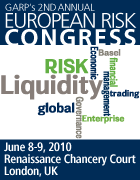Risk Measurement has become a whole new soul-search. In the late 1980s, financial markets began a transition into Risk Factor Sensitivities and Potential Loss Amount estimations, as alternatives to talking about Risk in notional amounts of exposure to one instrument or another. Senior management said well what does all that mean? How much could we lose?
And then came VaR!
And now a world with only two types of people – loud VaR-haters and very quiet and docile VaR lovers! Let me make my position crystal-clear: Some of my friends love VaR, some of my friends hate VaR. I agree with my friends.
Strengths of VaR
- Simple, with intuitive explanations as rough measure of how much a firm could lose e.g.
- VaR (95% confidence, 1-day): actual losses should exceed this only once in 20 days
- VaR (99%, 1-day horizon) : actual losses should only exceed this once in 100 days
- Broad application across instruments and classes; relatively easy to calculate and to understand in terms of dollars, additive, like all dollars fungible. Life was good!
VaR Assumptions, weaknesses, and misunderstandings
- Tendency to assume Normal distributions, and thus low probability of ‘extremes’. Reality is that financial returns are more skewed than normality suggests - excessively high and low return days are far more common than would be expected;
- There is often an assumption that history repeats itself, or, the past can predict the future;
- Now that we all know this, let me say it boldly: VaR does NOT describe the worst case loss (the problem of the little-knowledge-but-very-dangerous-manager). All it estimates is the worst case for a specified probability. In fact, an interpretation of VaR is that LOSSES WILL EXCEED VaR, with probability equal to (1 – VaR confidence level);
- VaR does not describe the losses in the extreme left “tail” of the distribution. (Conditional VaR can help to measure “the expected loss, given the loss exceeds VaR”)
- VaR does not distinguish portfolio liquidity; very different portfolios can have the same VaR i.e. VaR is a static measure of risk and does not capture the dynamics of possible losses if a portfolio were to be unwound;
- Computations can be very complex; there is model risk; precision should not be assumed;
- VaR-constrained traders can game the system i.e. maximize risk subject to keeping VaR steady. The game repeats itself at several levels; and can trigger an avalanche, because everyone misjudges risk in the same way.
Risk professionals will always use the caveats listed above, and warn against assuming VaR as the worst-case, or even the advisability of relying on a simple number that is statistically generated. With your continued involvement and comments, let us talk some more about VaR, Models, Stress-Tests…





